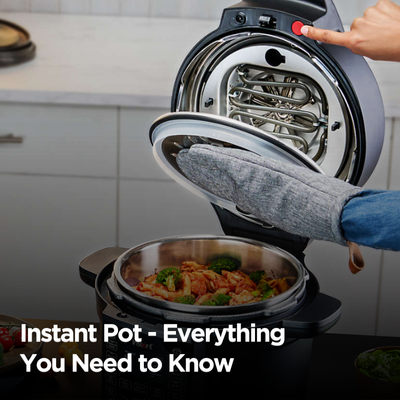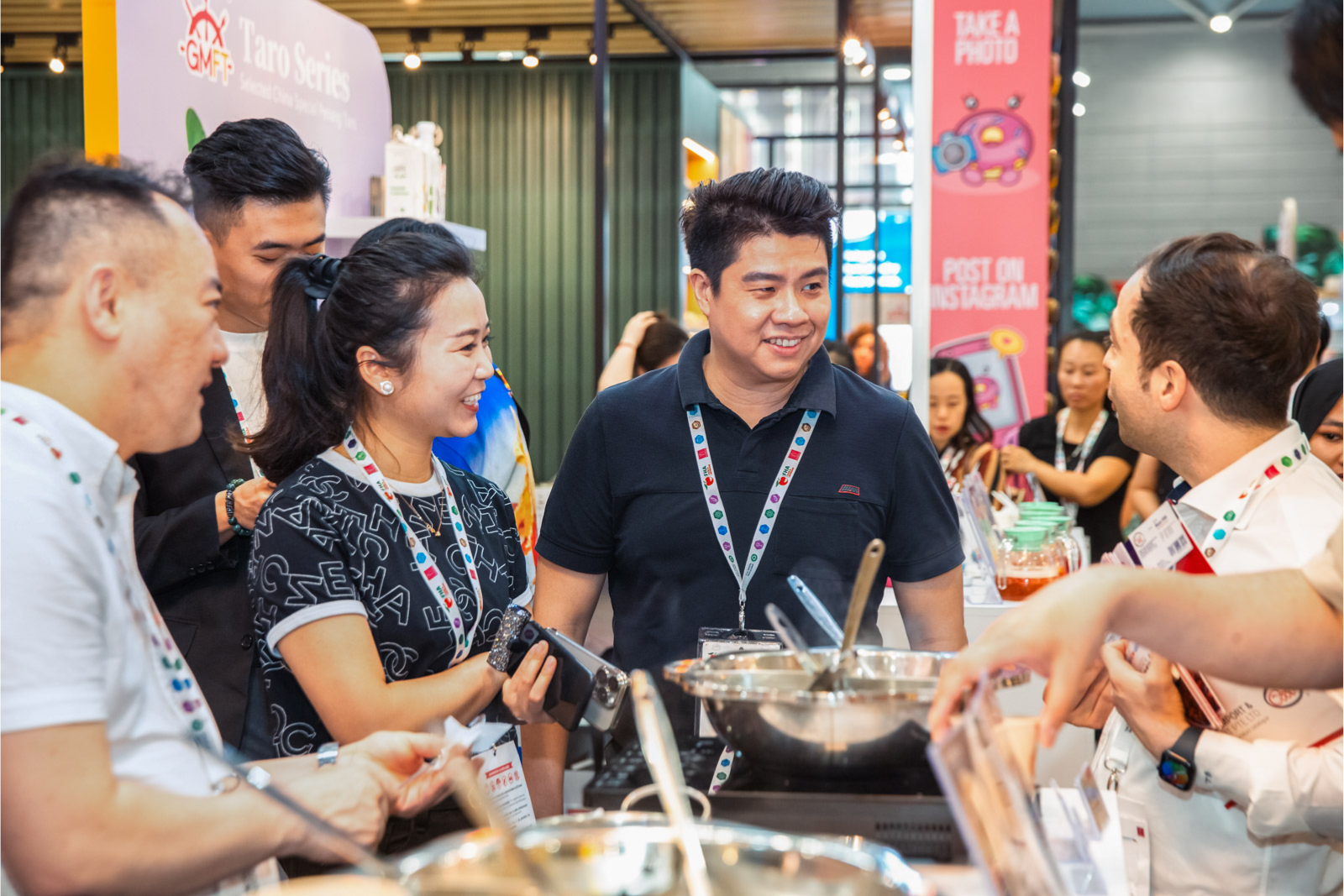The discovery of fire changed everything for humankind. The food moved from hunting and eating to commercial preparation. The evolution of the commercial kitchen has brought us far ahead from where we started, and the Instant Pot is a prime example.
The Instant Pot has revolutionized home and commercial cooking due to its speed, convenience, and versatility in one compact appliance. The global Instant Pot market is projected to acquire a market size of $7.86 billion by 2030, showing its popularity and demand strength in domestic and commercial settings.
Since its rise in popularity, it has remained the top choice for people who need an advanced, multi-purpose electric pressure cooker. More than just a mainstream pressure cooker, the Instant Pot features the capabilities of a slow cooker and rice maker, making meal prep easier for busy commercial kitchens.
In this blog, we will discover how the Instant Pot works and why it remains a kitchen appliance for those who want delicious meals with minimal effort. Let’s start with some basics of what an instant pot is.
What is an Instant Pot?
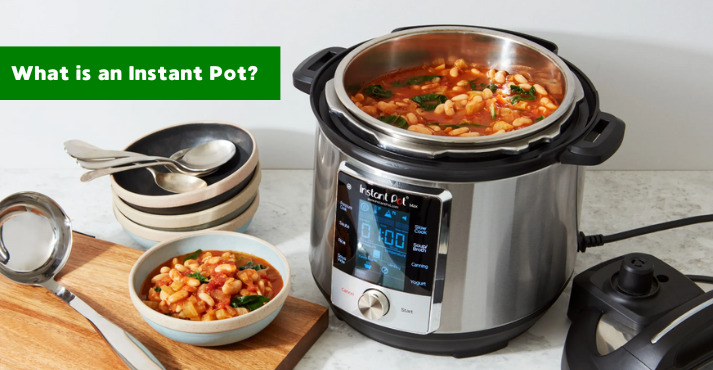
An Instant Pot is a modern electric pressure cooker that simplifies home cooking. Unlike traditional stovetop pressure cookers, which require constant monitoring and manual pressure adjustments, the Instant Pot is fully automated. It uses built-in sensors and preset programs to regulate temperature and pressure, making cooking safer and more convenient.
What sets the Instant Pot apart is the fact that it is multi-purpose kitchenware. Understand the Instant Pot as an electric pressure cooker that works as a:
- low cooker
- Rice cooker
- Steamer
- Yogurt maker
It’s designed to make cooking faster and easier with minimal supervision. However, which instant pot you should get is influenced by different usage factors, as some models also include sous vide, sterilisation, and air frying functions, adding even more versatility.
Its ease of use and quick cooking of meals have made it a favorite in modern commercial kitchens to pace up production. Whether you want a fast-cooked meal or a slow-simmered dish, it saves time and effort without compromising flavor.
How does the Instant Pot work?
Now that you understand what an Instant Pot is, you must next acknowledge how the Instant Pot works. Below is the working procedure of the Instant Pot, along with some crucial factors you must understand to fully utilize it for your cooking.
1. Sealed Cooking Environment
Once ingredients are added, the lid locks into place, creating an airtight seal. This trapped steam increases internal pressure, raising the boiling point of water and cooking food much faster than traditional methods.
2. Controlled Pressure & Heat
The Instant Pot heats up using an electric heating element at the base. It contains sensors that monitor temperature and pressure levels and automatically adjust them as needed, so there is no need for manual interventions. This ensures even cooking and prevents over-pressurisation for safe operation.
3. Multiple Cooking Functions
The Instant Pot is more than just a pressure cooker. It also functions as:
- Slow Cooker – Simmer meals for hours without needing a separate appliance.
- Saute Pan – Brown meats, onions, or other ingredients (before pressure cooking).
- Steamer – Cook vegetables, seafood, or dumplings with a steaming rack.
- Rice Cooker – Prepare rice, quinoa, and other grains with precise settings.
- Yogurt Maker – Ferment homemade yogurt by maintaining a steady low temperature.
4. Automatic Pressure Release
Once cooking is complete, the pressure inside the pot must be released before opening the lid. There are two ways to do this:
- Natural Pressure Release (NPR)
- Quick Release (QR)
These two methods will be discussed in the following sections of this blog.
5. Cooking Completion & Keeping Warm
Once the pressure is released, the Instant Pot automatically switches to Keep Warm mode, maintaining the food’s temperature until it is ready to serve.
This innovative working methodology makes the Instant Pot a time-saving, user-friendly appliance that simplifies meal preparation while ensuring high-quality results.
Different Types and Models of Instant Pot
Knowing what an Instant Pot is is not enough. You can have a lot of models and variants for all types of food and beverage service equipment, and Instant Pot is no different.
Below are some of the most common ones, and the unique Instant Pot features in each model significantly influence which Instant Pot you should get:
- Instant Pot Duo – One of the most popular models, featuring seven cooking functions: pressure cooking, slow cooking, sauteing, steaming, and yogurt making.
- Instant Pot Ultra – Offers more precise temperature control, a customisable pressure release feature, and an advanced digital display for better cooking adjustments.
- Instant Pot Pro – Designed for serious home cooks, with faster preheating, 28 different smart cooking programs, and a durable stainless-steel inner pot.
- Instant Pot Max – Features a higher pressure setting (15 PSI) for canning, faster cooking, and touchscreen controls.
- Instant Pot Duo Crisp – Comes with an air fryer lid, allowing users to air fry, roast, and broil in addition to pressure cooking.
Benefits of Using an Instant Pot
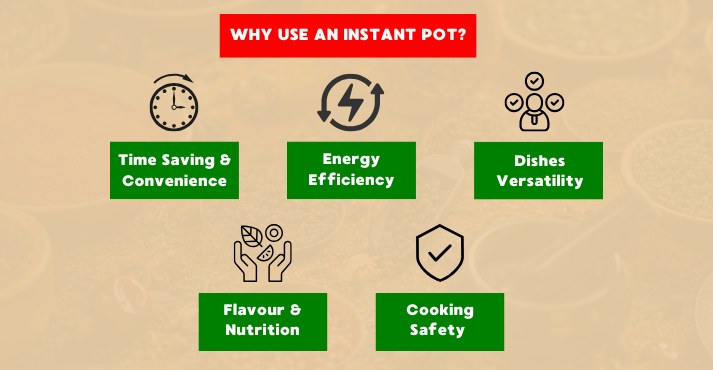
Around 60% of people prefer multifunctional kitchenware, with instant pots being their top pick. The Instant Pot features a range of cooking options, each with unique benefits and perks. Let’s see some of its benefits that truly revolutionize your cooking in modern domestic or commercial kitchens.
1. Time Saving and Convenience
One of the most significant advantages of the Instant Pot is its ability to cut down cooking time significantly. Using traditional methods, meals that take hours to prepare can be ready in under 30 minutes, and that is without manual intervention like in conventional pressure cookers.
Another significant benefit is one-pot cooking. You can saute, pressure cook, and warm food all in the same pot, reducing the need for multiple pans and minimising clean-up. This makes it perfect for busy commercial kitchens looking to prepare well-cooked meals without the hassle.
2. Energy Efficiency
The Instant Pot is more energy-efficient than ovens and stovetops. It uses less electricity because it cooks food faster and retains heat better with its insulated design. Unlike traditional cooking methods that keep heating for long periods, the Instant Pot optimises energy use by controlling temperature and pressure automatically. This makes it a cost-effective and environmentally friendly option.
3. Versatility in Cooking
One of the standout features of the Instant Pot is its multi-functionality. Depending on the model we discussed above, it can:
- Pressure cook
- Slow cook
- Saute
- Steam vegetables and seafood
- Make yogurt
- Cook rice and grains
- Warm food
- Bake cakes, cheesecakes, and even bread
Some models, like the Duo Crisp, even have air frying capabilities, adding another layer of feasibility. This means you can replace multiple kitchen appliances with just one device.
4. Enhanced Flavour and Nutrient Retention
Pressure cooking speeds up the process and locks in nutrients and flavours. Since food cooks in a sealed environment with minimal water, fewer vitamins and minerals are lost compared to boiling or frying. This results in:
- More tender and juicy meats
- More prosperous, deeper flavours in soups and stews
- Better nutrient retention in vegetables
It also prevents excessive moisture loss, keeping food from drying out while enhancing its natural taste.
5. Safety Features
Unlike traditional stovetop pressure cookers, the Instant Pot has multiple built-in safety features, making it user-friendly and reliable. These include:
- Automatic Pressure Control – Ensures the pressure stays within a safe range.
- Overheat Protection – Prevents the pot from overheating or burning food.
- Lid-Locking Mechanism – The lid stays locked until the pressure is fully released, preventing accidental burns.
- Steam Release Valve – Regulates pressure and allows safe steam release after cooking.
What Can You Cook in an Instant Pot?
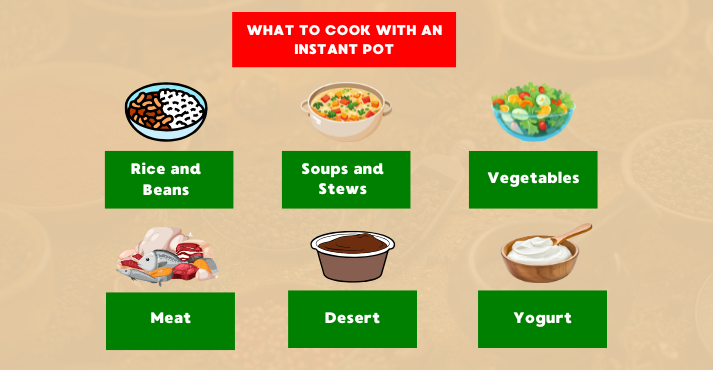
The Instant Pot is ideal for various dishes, from everyday staples to gourmet meals. It works well for busy households, meal preppers, and even those experimenting with new recipes.
Common Food Categories Ideal for Instant Pot Cooking
- Rice, Grains, and Beans
- Cook perfect rice, quinoa, farro, and other grains in minutes.
- Dry beans that typically require hours of soaking can be cooked in about 30 minutes.
- Ideal for making lentils, chickpeas, and black beans for soups, curries, or salads.
Soups and Stews
The Instant Pot makes rich, flavourful soups and stews in a fraction of the usual time. It’s great for chili, beef stew, minestrone, and lentil soup.
The high-pressure setting extracts deep flavours, making broths and stocks faster than traditional simmering.
Meat (Chicken, Beef, Pork, Fish)
Instant Pot Quickly cooks tender, juicy meats without drying them out. It’s ideal for shredded chicken, braised beef, pulled pork, and whole-roasted chicken.
It can be used for steaming fish or making tender lamb dishes.
Vegetables
Instant Pot cooks vegetables efficiently while preserving nutrients, making it great for steaming potatoes, carrots, cauliflower, and green beans.
You can prepare mashed potatoes, butternut squash puree, and sauteed greens in an Instant Pot with the right flavor you need.
Desserts (Cheesecakes, Puddings, etc.)
The Instant Pot provides a controlled cooking environment perfect for cheesecakes, flans, and puddings. It can make moist chocolate cakes, rice pudding, and even creme brulee.
Yogurt
Most Instant Pot models have a yogurt-making function. Precise temperature control allows fermentation for homemade yogurt with no special equipment needed.
You can customize it for different styles, including Greek yogurt and dairy-free alternatives.
Step-by-Step Guide on How to Use an Instant Pot
After learning what an instant pot is and all its features and benefits. Now, the most crucial part is to know how to use an Instant Pot. Instant Pot automates much of the work, but knowing the key steps ensures better results. Let’s go through a step-by-step guide to using the Instant Pot.
*Cooking with the Instant Pot depends on the recipe, but most dishes follow a similar step-by-step process.
1. Prepping and Sauteing (If Required)
Before pressure cooking, some recipes require browning meat, sauteing vegetables, or toasting spices to enhance flavour.
1A. Press the Saute button and wait for the display to show “Hot.”
1B. Add oil, butter, or fat, and brown your protein (beef, chicken, or other meats).
1C. If your recipe calls for aromatics like onions, garlic, or spices, add them now and cook until fragrant.
1D. Press Cancel to stop the saute function before moving to the next step.
2. Adding Ingredients and Liquid
Pressure cooking requires liquid to generate steam and build pressure. Without enough liquid, the Instant Pot won’t function properly. This is how you can do so:
2A. Add the main ingredients (meat, grains, vegetables, or beans).
2B. Pour in the required amount of liquid (water, broth, or sauce). Most recipes need at least 1 cup of liquid to avoid a burn warning.
2C. Stir if necessary, but layering (without stirring) helps prevent sticking for starchy ingredients like rice and pasta.
3. Setting the Cooking Mode
Once the ingredients are in, it’s time to select the correct pressure cooking setting. To do this:
3A. Secure the lid by placing it on top and turning it until you hear a locking sound.
3B. Ensure the steam release valve is set to Sealing (this is crucial for building pressure).
3C. Select Pressure Cook (or Manual, depending on the model).
3D. Tap the button again to choose High Pressure (which most recipes require).
3E. Use the plus (+) and minus (-) buttons to adjust the cooking time according to your recipe.
How Cooking Time Works:
The Instant Pot does not start counting down immediately. It first builds pressure, which can take 5–15 minutes depending on the amount of liquid and ingredients.
Once full pressure is reached, the countdown timer starts.
The red float valve will open when the Instant Pot is fully pressurised, locking the lid in place.
4. Cooking and Pressure Release
When the set cooking time is up, the Instant Pot stops heating, but the lid remains locked due to the built-up pressure. At this point, you must release the pressure before opening the lid. There are two ways to do this:
- Natural Pressure Release (NPR)
The Instant Pot remains sealed, allowing the pressure to release gradually over 20–60 minutes. This method is ideal for dishes like soups, stews, and significant cuts of meat, as it prevents food from overcooking. This is how it works:
- The Instant Pot gradually releases pressure on its own.
- Depending on the liquid content, the red float valve drops when all pressure is gone, which can take 20 to 60 minutes.
*Best for soups, stews, and significant cuts of meat, as it allows food to continue cooking gently.
- Manual Pressure Release (Quick Release – QR)
The steam is manually released by turning the valve to the Venting position. This quickly depressurises the pot, stopping the cooking process immediately. It’s useful for delicate foods like vegetables and seafood, which can be overcooked under constant pressure.
It takes about 5–15 minutes, depending on the meal.
*Best for foods like seafood and vegetables, where overcooking is a concern.
Things to Remember:
- Always release steam carefully to avoid burns.
- Use a long spoon or towel to turn the valve and keep your hands away from the steam.
- For very high-liquid meals (soups, stews), let it rest for a few minutes before using Quick Release to prevent splattering.
5. Serving or Keeping Warm
The red float valve will drop once the pressure is fully released, and you can open the lid.
If not serving immediately, the Instant Pot automatically switches to Keep Warm mode, maintaining the food’s temperature until you’re ready to eat.
*For thick dishes like stews or sauces, you may want to stir before serving to distribute the heat evenly.
Conclusion
Now you fully understand what is Instant Pot and how it can make your cooking a breeze. Instant Pot is a prominent example of why it is necessary to use technology in the restaurant industry. Due to its convenience and versatility, there is no point in not having this crucial kitchen appliance in any household or commercial kitchen.
If you want to read more helpful tips and tricks and discover ways to make your cooking easier, stay connected with FHA HORECA for all things food and hospitality related.

